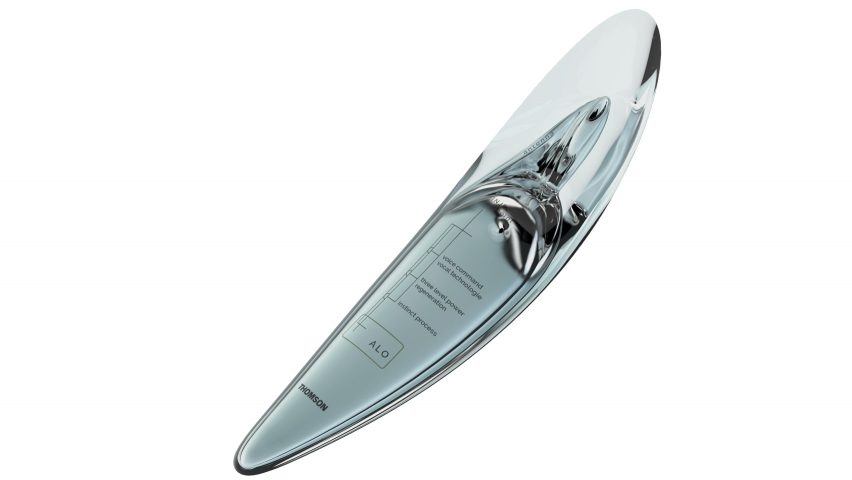French designers Philippe Starck and Jerome Olivet have proposed a radical concept for the future of smartphones based around holograms and voice control.
Designed for a day when voice-activated technology dominates, the Alo smartphone has a "gelatinous", translucent and elongated case designed to fit naturally in the hand.
Instead of having a prominent touch-sensitive screen, the phone projects any movies or messages the user might want to view as a 3D holographic image. It is entirely operated by voice commands.
"Alo provides a fully vocalised interface in all phone functions, reads SMS and emails, and even allows them to dictate their messages rather than typing them," said Olivet, who specialises in product design for new technologies.
"The phone's camera acts as an 'eye'. Among other things, it allows the reader to read the texts he detects or to identify the faces. It also allows you to project a 3D hologram to view a movie or message."
At Alo's centre is a moulded aluminium alloy core. The pliable casing is designed to function as a haptic interface, giving feedback through heat as well as vibration.
"Its translucent skin emits vibrations or communicates by producing heat depending on its activity," Olivet told Dezeen. "Its skin repairs automatically as soon as it is damaged."
While Alo looks like a radical departure from current smartphones, its orientation towards voice control is mirrored in contemporary product development. The recent launch of smart assistants Amazon Echo and Google Home has brought voice-controlled smart assistants into many homes.
Alo is designed for a time when speech recognition is so high-performing that other controls are not necessary.
While it is currently only a concept, Olivet plans to develop Alo, or a version of it, into a prototype. It is attached to French electronics brand Thomson.
"It is a true artificial intelligence," said Olivet, who led the project, facilitated by Starck. "We can no longer separate from this device."
While Starck has expressed some criticism of contemporary screen culture in the past, he has form designing smartphones.
His first, the Mi Mix for Chinese electronics company Xiaomi, was praised for its near-edgeless display that covers 91 per cent of the phone's front surface area.

